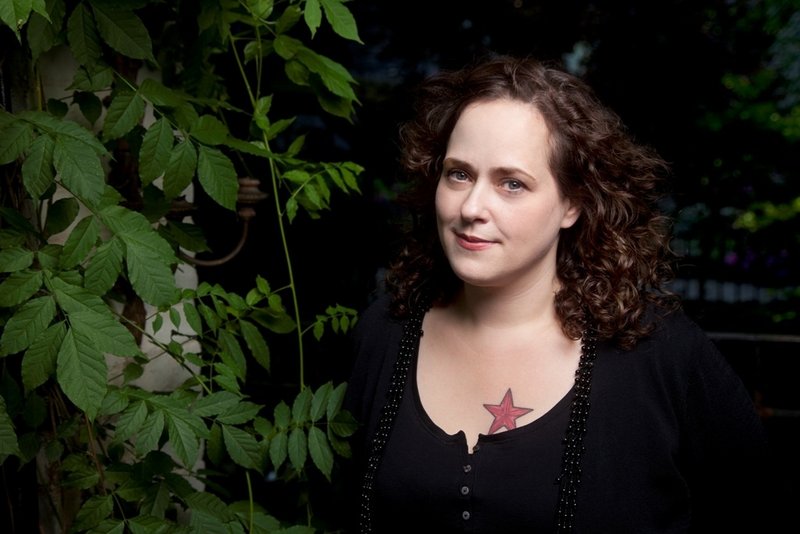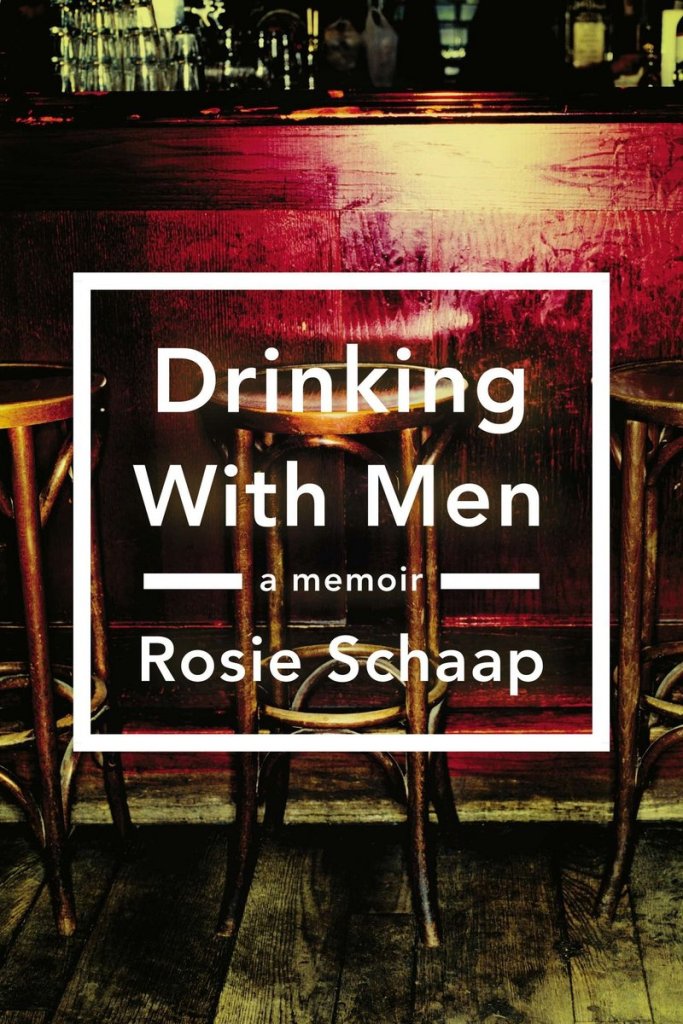Rosie Schaap has been writing about cocktails and bars in her “Drink” column for The New York Times Magazine since 2011.
Now she’s written a new memoir, “Drinking with Men” (Riverhead Books, $26.95), about her love affair with bar culture and the neighborhood bars she has frequented over the years in her native New York City.
Schaap, 42, has a love of writing in her genes. Her father was award-winning sportswriter and author Dick Schaap, who died in 2001.
As a 15-year-old, Schaap told fortunes in exchange for beer. She has also been an English teacher, an editor, a preacher, a manager of homeless shelters, a librarian at a paranormal society and, of course, a bartender. In addition to writing her “Drink” column, she is a contributor to the radio show “This American Life.”
Schaap will be in Portland on May 24 to read from her memoir at Space Gallery, then she’ll wander down Congress Street to LFK, where she’ll lift a glass with anyone who wants to meet her.
Schaap has been to Portland twice to visit her friend, novelist Kate Christensen, and has a particular fondness for J’s Oyster and its horseshoe bar. Horseshoe bars, she says, are hard to find in New York these days.
“A horsehoe bar, there’s something so intimate about it, and it really does encourage conversation,” Schaap said. “It seems like everyone at J’s talks to everyone else, and it always seems humming and busy and happy and cheerful, and I get a kick out of all the waitresses I’ve met there.
“So when I think of Portland — I mean, I know there are so many fantastic restaurants, and I can’t wait to try more — but I always think of just happily wiling away four hours at J’s on a nice afternoon, eating oysters and drinking beer and whiskey.”
Q: Your father was a well-known sportswriter. Would he be happy to know you write a column for The New York Times Magazine?
A: I think he’d be pretty thrilled. My father was one of these people who really started writing professionally at an unusually early age. He started as a teenager as a stringer for his local Long Island paper. He always knew he wanted to be a journalist, but in a way he always was a journalist. And I tried a lot of different things before kind of backing into journalism.
I hadn’t really thought of it. I think I resisted it in some ways because of my family. But it’s turned out to be the best job in the world.
My mother died the same year I started writing for the Times magazine, and my father died in 2001. It was really thrilling to get the job, but I really wished that they had been there to see it happen.
Q: At the beginning of your book, you calculate that you’ve spent 13,000 hours in bars.
A: Right, and to be honest, that was a conservative estimate. The only math I can do is what I call “bartender math.” I can calculate your tab pretty quickly and accurately, but my editor and I sat down with a cocktail napkin and tried to sort of come up with a sort of conservative estimate of how many hours I’d actually spent in bars.
Q: Have you learned all that you know about cocktails through sheer osmosis, or have you had to work at it?
A: I’ve had to work at it. I know this sounds a little bit funny to people, but my work as a person who writes about drink culture, and particularly about cocktails, is in some ways so different from my own experience in a bar.
I’ve always loved a good cocktail. My mom was pretty devoted to a whiskey sour, a classic drink that remains a favorite of mine, so that was the first cocktail I ever made. But for me, bars — and I try to make this clear in the book — they’re places where we drink, of course, but mostly they’re places where we engage with other people.
So I think people who scan my book hoping for a great corpse reviver recipe or something like that will probably be surprised to discover that most of what I’m drinking throughout the book is Guinness and Jameson and wine and very simple stuff like that. Mostly, I’ve learned through tasting and experimenting. I love making cocktails for friends.
Q: You’ve done so many things with your life, including bartending and teaching English. How did you originally get into writing about cocktails and bars? Did you set out to be a writer?
A: I always wrote. But what I wrote when I was very young, starting in elementary school and going through college, was poetry. And poetry remains deeply important to me. I don’t write very much of it anymore, but I still read a lot of it. I read at least a poem a day. But I did have the common sense to realize at a certain point that poetry isn’t much of a way to make a living.
In college, I came to really enjoy writing essays. For me, getting to write a column, which is a very compressed, essayistic form, is perfect. Mostly I write about drink, but I still occasionally write about poetry and occasionally write about soccer, one of my other great loves. But to be honest, I always hoped that maybe I would write a book.
I worked in publishing for a bunch of years, and I worked on a lot of other people’s books, and there was a point in my 30s I thought, maybe the window was closing. I just didn’t have an idea for a book that I felt I had to write. It wasn’t until I was 36, 37, that I really started thinking seriously about writing “Drinking with Men.” It occurred to me that I had something to say about bar culture, and particularly about being a woman in bar culture.
I remember very clearly this sort of “a-ha moment” when I had become a regular at a bar on the Lower East Side, Good World, and I just fell in love with the place. It was after a period in which I hadn’t really been a regular for a couple of years, which was unusual for me. I started going to Good World, and I just loved it.
One of the first things I always do when I really fall for a bar is invite my closest women friends to come have a drink. And I noticed that they always loved it and had a good time and understood what I saw in the place, but they didn’t have any burning desire to come back the next night and the next night and the next night.
And I realized then that, even in New York, where all things seem possible in terms of establishing one’s identity, a woman regular, even here, was kind of an anomaly. And that’s when I felt I really had a story to tell.
Q: I know you believe that a martini should always be made with gin and not vodka. What are some of the other “mistakes” people make when ordering a drink?
A: This is always an interesting conversation for me, because I never want to be too orthodox. I certainly don’t want to be one of those imperious, “I know better than you” bartenders. It’s funny, because my next column, which will be in the magazine (Sunday), is about gin. And I think gin, really more than any other spirit, has this extremely ominous folklore attached to it. Like, “Gin makes me depressed.”
We think back to Hogarth and the horrible gin craze of the 18th century in England, when impoverished Londoners were dying and dissolute, and it was all because of this very cheap gin. That’s very different from the gin we drink now, but I think the sort of perceived notions about gin have proved to be very powerful. I think there’s a kind of knee-jerk reaction that many bar customers have against gin.
A friend of mine always teases me; she says my face can’t hide anything, so I try not to furrow my brow or look disappointed. Rather than telling a person, “Oh no, you can’t have a vodka martini,” instead I’ll ask a question: “When’s the last time you had a martini made with gin?” And much of the time, they’ll say, “never.” They just know they don’t like it, and it’s going to mess them up. So I try to encourage them to try something different.
Q: What’s the next big thing in bars or cocktails?
A: You know, that’s something I ask bartenders all the time when I go out, and I get different answers from every bartender. There’s a new bar in New York that opened this winter that’s been getting a lot of attention called The Dead Rabbit. It’s a wonderful place. It’s basically two bars under one roof. The first floor is like a traditional Irish pub, and the upstairs is just one of the great cocktail bars in the city.
I was upstairs last night with a friend and we had a great bartender, of course, and I asked her what she was excited about, and she is really excited about rum drinks right now.
But another bartender a few days earlier said, “Oh, now that the sun is shining, of course it’s time to start making more gin cocktails.” So I don’t see any particularly clear trends with spirits.
One thing I’ve noticed — and I’m certainly not alone in noticing this over the last few years — is a real revival of rye, whereas a few years ago, most customers who wanted a Manhattan wanted it with bourbon. There’s been a certain movement back to rye.
But what I’m also seeing is, I feel we’ve kind of reached a pinnacle of haute cocktail culture. People are loving their great cocktails, but I think they’re wanting just a more relaxed, low-pressure bar experience. There are some wonderful speakeasy-style bars in New York that I really enjoy, and they’re great places to go and try a cocktail — you know, some 19th-century recipe that you might not be able to try elsewhere — but they’re not necessarily the kind of places that really encourage regularhood and the friendships that come along with that.
I’m noticing people just wanting this sort of simpler pleasure in their bar experience. There’s nothing wrong with stopping by a bar after work and just having a couple of pints of beer and a good conversation. You can try that very special sour with 10 ingredients some other time.
Staff Writer Meredith Goad can be contacted at 791-6332 or at:
mgoad@pressherald.com
Send questions/comments to the editors.





Success. Please wait for the page to reload. If the page does not reload within 5 seconds, please refresh the page.
Enter your email and password to access comments.
Hi, to comment on stories you must . This profile is in addition to your subscription and website login.
Already have a commenting profile? .
Invalid username/password.
Please check your email to confirm and complete your registration.
Only subscribers are eligible to post comments. Please subscribe or login first for digital access. Here’s why.
Use the form below to reset your password. When you've submitted your account email, we will send an email with a reset code.